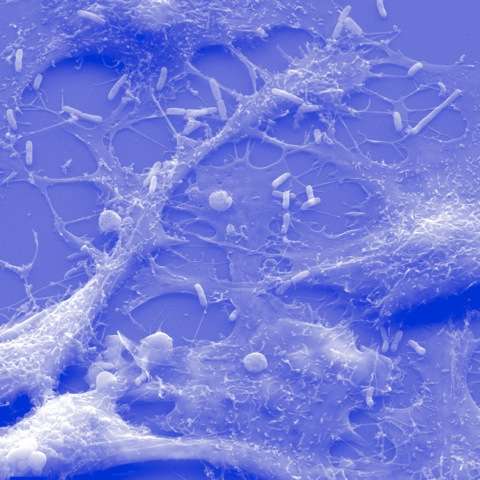Key pathological mechanism found in plague bacterium

(Phys.org)—A more than 50-year-old question has now been answered. Chemists and microbiologists at the Biological Chemistry Center at Umeå University in Sweden are now able to describe in detail the role of calcium in the ability of the plague bacterium Yersinias to cause disease.
In the 14th century, the Black Death claimed the lives of one third of the population of Europe. Even though the bacterium Yersinia pestis, which causes the disease, is regarded as eradicated in Europe, the World Health Organization is still reporting epidemics in Africa, Asia, and America. Bacteria in the Yersinia family can also lead to severe gastrointestinal diseases and diarrheas.
A key question that originated in research done in the 1950s is how calcium can play a critical role in the ability of Yersinia to cause disease. This long-lived issue has now been resolved by an interdisciplinary research team at Umeå University who are revealing the molecular mechanism underlying the importance of calcium.
"It was previously known that calcium inhibits an important step during the infection process. We have now identified a specific protein called YscU, which binds calcium, and we believe that this is an important part of the calcium effect," says Hans Wolf-Watz, a senior professor at the Department of Molecular Biology.
Together with Magnus Wolf-Watz, an assistant professor at the Department of Chemistry, he has shown that the breakdown of the protein YscU is a necessary step in the infection process.
"With NMR experiments, we have been able, on the one hand, to study the details surrounding this degradation and, on the other hand, to identify which part of YscU binds to calcium," says Magnus Wolf-Watz.
Nuclear magnetic resonance spectroscopy is a method used by researchers to determine the structure and composition of molecules. At the joint NMR Center at the Biological Chemistry Center, a new high-field 850 MHz instrument was inaugurated a week ago.
"This new instrument will provide opportunities for exciting new discoveries in our research field and in other fields, and the resource is available to scientists at other Swedish higher-education institutions," says Magnus Wolf-Watz.
The research findings are published in the journal PLOS ONE.
More information: Frost, S. et al., Autoproteolysis and Intramolecular dissociation of Yersinia YscU precedes secretion of its C-terminal polypeptide YscUCC, PLOS ONE, 2012. dx.plos.org/10.1371/journal.pone.0049349
Journal information: PLoS ONE
Provided by Umea University

















